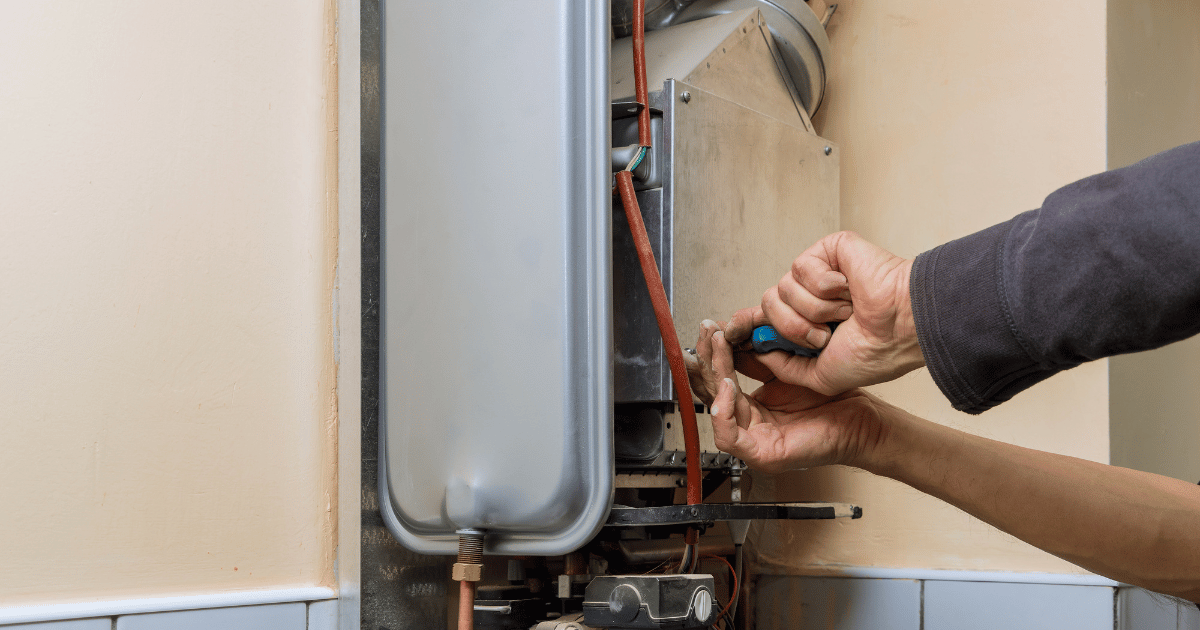Essential Guidance on Caring for Your Home's Hot Water SystemCaring for Your Home's Hot Water System: Key Guidelines
Essential Guidance on Caring for Your Home's Hot Water SystemCaring for Your Home's Hot Water System: Key Guidelines
Blog Article
In this article down the page you will find a good deal of good quality details on the subject of How to Maintain Your Water Heater & Prolong its Life.

Hot water is essential for everyday comfort, whether it's for a refreshing shower or washing recipes. To ensure your warm water system runs effectively and lasts longer, routine upkeep is crucial. This write-up offers functional tips and understandings on how to maintain your home's warm water system to avoid disturbances and costly repairs.
Intro
Maintaining your home's warm water system might seem complicated, but with a couple of simple steps, you can guarantee it operates smoothly for several years to find. This overview covers whatever from recognizing your warm water system to DIY maintenance ideas and understanding when to call professional assistance.
Significance of Keeping Your Hot Water System
Normal maintenance not only expands the lifespan of your hot water system yet also ensures it runs successfully. Overlooking maintenance can cause lowered efficiency, greater energy bills, and even premature failing of the system.
Signs Your Hot Water System Needs Maintenance
Knowing when your warm water system needs focus can protect against major concerns. Keep an eye out for signs such as inconsistent water temperature level, unusual sounds from the heating system, or corroded water.
Understanding Your Hot Water System
Before diving right into upkeep jobs, it's practical to recognize the basic components of your hot water system. Generally, this consists of the hot water heater itself, pipelines, anode poles, and temperature level controls.
Monthly Maintenance Tasks
Normal month-to-month checks can aid catch minor issues prior to they intensify.
Flushing the Hot Water Heater
Purging your water heater removes sediment build-up, enhancing efficiency and lengthening its life.
Monitoring and Changing Anode Rods
Anode rods prevent deterioration inside the storage tank. Checking and replacing them when broken is important.
Inspecting and Readjusting Temperature Setups
Changing the temperature settings ensures optimum efficiency and security.
DIY Tips for Maintenance
You can perform numerous upkeep tasks yourself to maintain your warm water system in leading problem.
Looking for Leaks
Frequently inspect pipes and links for leakages, as these can cause water damages and higher bills.
Checking Pressure Relief Valves
Testing the pressure safety valve guarantees it operates appropriately and protects against too much stress build-up.
Shielding Pipelines
Shielding warm water pipelines minimizes warm loss and can conserve power.
When to Call a Specialist
While DIY maintenance is helpful, some concerns require professional knowledge.
Complicated Problems Requiring Expert Assistance
Examples include major leaks, electrical problems, or if your hot water heater is consistently underperforming.
Regular Professional Upkeep Benefits
Professional maintenance can include detailed examinations, tune-ups, and ensuring compliance with security criteria.
Verdict
Regular maintenance of your home's hot water system is essential for performance, durability, and price financial savings. By complying with these suggestions and knowing when to seek professional help, you can make certain a reliable supply of hot water without unanticipated interruptions.
How to Maintain an Instant Hot Water Heater
Before tinkering with your hot water heater, make sure that it’s not powered on. You also have to turn off the main circuit breaker and shut off the main gas line to prevent accidents. Also turn off the water valves connected to your unit to prevent water from flowing into and out of the appliance. 2. When you’re done, you have to detach the purge valves’ caps. These look like the letter “T” and are situated on either side of the water valves. Doing so will release any pressure that has accumulated inside the valves while at the same time avoid hot water from shooting out and burning your skin. 3. When the purge valves’ caps are removed, you have to connect your hosing lines to the valves. Your unit should have come with three hoses but if it didn’t, you can purchase these things from any hardware or home repair shops. You can also get them from retail stores that sell water heating systems. Read the user’s manual and follow it to complete this task properly. When the hosing lines are connected, open the purge port’s valves. 4. You should never use harsh chemical cleaners or solutions when cleaning your unit. Make use of white vinegar instead. It should be undiluted and you’ll probably use about 2 gallons. 5. Now flush your water heater. This task should probably take about 40 minutes. We can’t give you specific directions for this because the procedure is carried out depending on the type, model and brand of your heater. With that being said, refer to the user’s manual. 6. When you’re done draining the unit, you have to turn off the purge port valves again. Remove the hosing lines that you earlier installed on each of the water valves. Put the valve caps (purge port) back in their respective places and be very careful so as not to damage the rubber discs that are found inside these caps. 7. Now that everything’s back in place, check your user’s manual again to find out how to reactivate your water heating system. 8. Once it is working, turn one of your hot water faucets on just to let air pass through the heater’s water supply pipes. Leave the tap on until water flows smoothly out of it. https://www.orrplumbing.com/blog/2014/september/how-to-maintain-an-instant-hot-water-heater/

I came across that content on Tips For Maintaining Your Hot Water Heater when doing a lookup on the internet. Sharing is caring. Helping people is fun. Thanks a lot for taking the time to read it.
Call Today Report this page